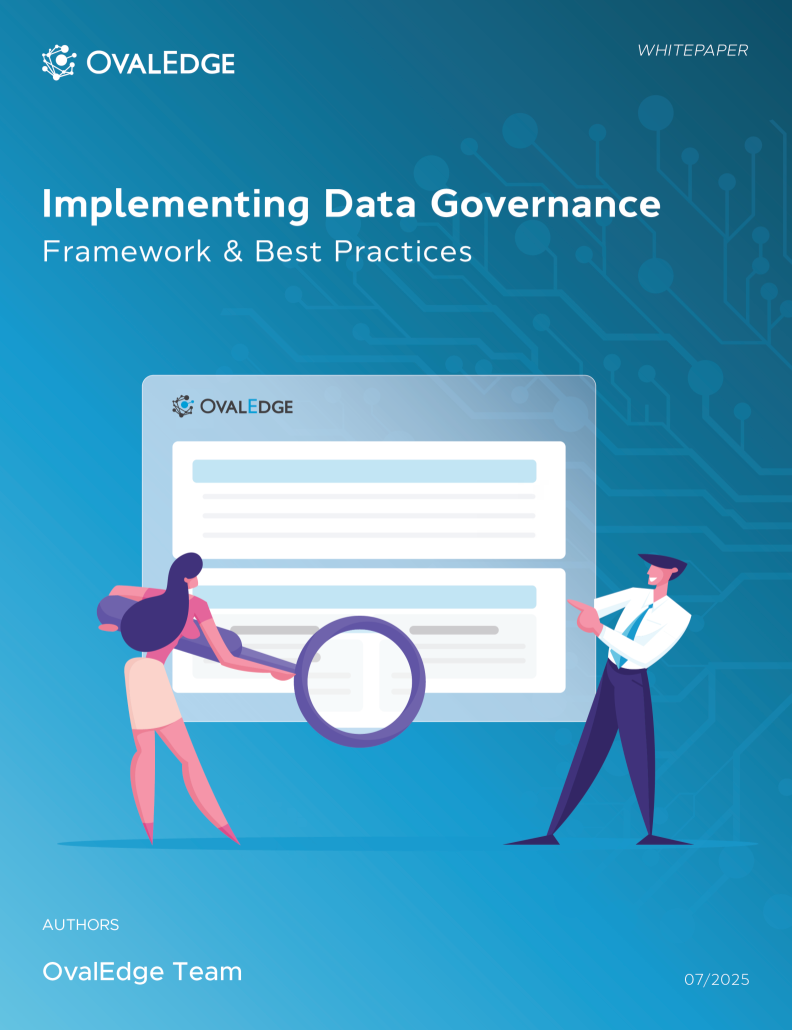Table of Contents
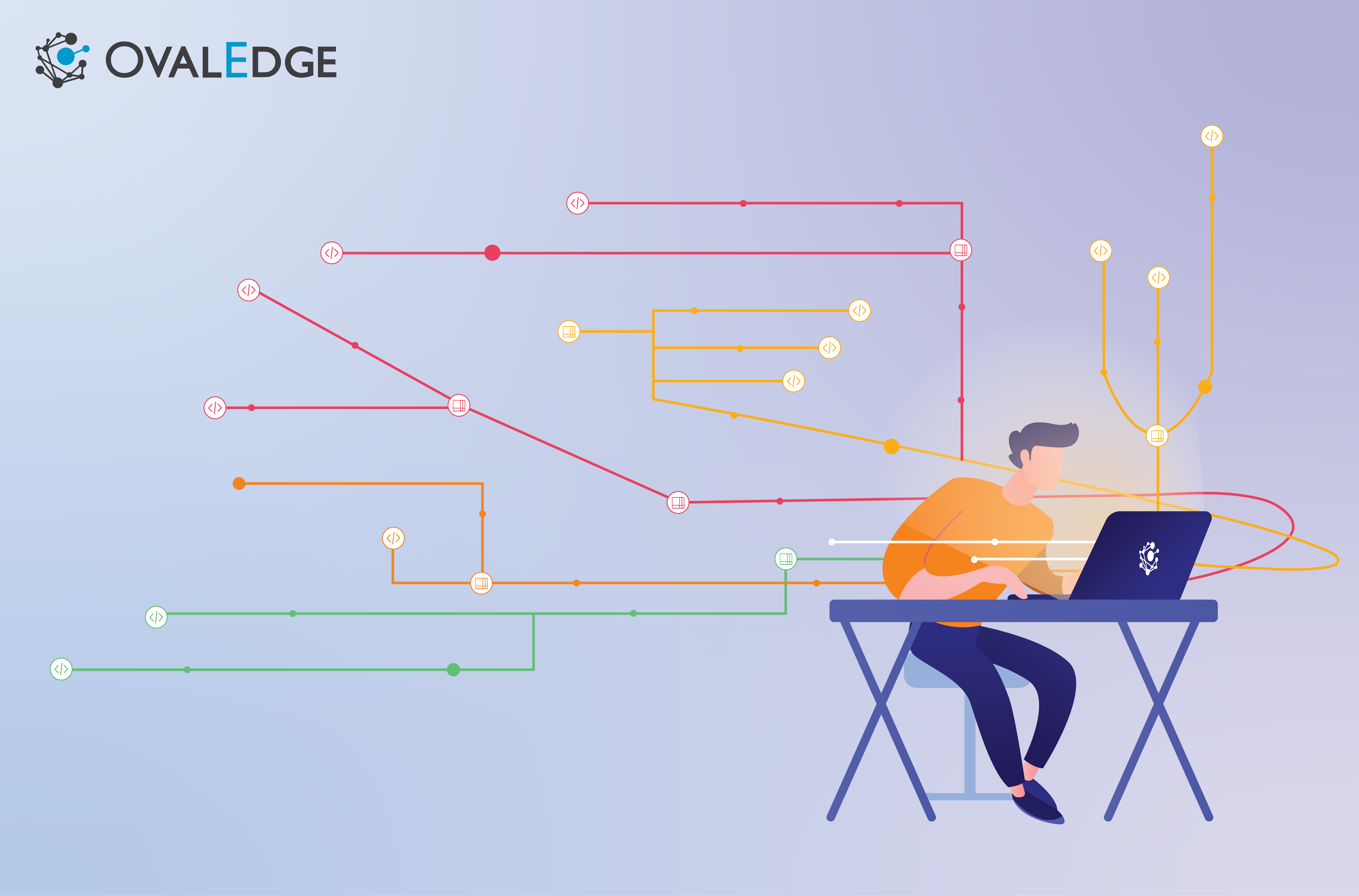
Data Lineage Drivers and Techniques - OvalEdge
Data lineage, tracking, and recording the various processes and changes data has been through since its inception is one of the core aspects of data governance. It enables organizations to fully understand how data flows from one place to another within a cloud-based or on-prem infrastructure, tracking its course through databases, data lakes, ETLs, data warehouses, and reporting systems.
However, data lineage is more than just an additional element to a data governance toolkit; it is also a regulatory requirement. In this blog, we'll examine the core outcomes of a comprehensive data lineage program before explaining the technical processes involved in how to implement data lineage.
Drivers of Data Lineage
Why is data lineage so high on the data governance agenda? Today, companies collect and utilize data at a staggering rate in the era of big data. Gone are the days when BI involved targeted data sets; instead, data analysis has become industrialized.
And for a good reason. Advances in AI and other technologies enable data-driven insights to inform and influence every aspect of a business, providing companies with countless opportunities to gain a competitive edge.
However, for this process to work, users must trust the data available to them, and for that, they need to know where it came from, where it's been, and where it's going. And when you can't trace the lineage of your data, you can't determine its quality.
At the same time, maintaining data privacy compliance has become a top priority for companies in every sector. However, understanding where PII information has been and who has accessed it is necessary for the task.
The modern data ecosystem is a minefield. It’s a complex web of systems and processes that users can only navigate successfully with a dedicated governance tool.
1. Lack of trust in data products: Data-driven organizations only succeed when everyone is onboard and working towards a common goal. Yet, users are becoming increasingly disillusioned with data products because, without accurate lineage, there is no proof that they are what they claim to be.
2. Never-ending data quality issues: When you can't trace the origin and flow of data, you can't improve its quality. As a result, an absence of lineage leads to ongoing data quality issues.
3. Regulatory compliance: Data privacy compliance is just one of the many regulatory compliance statutes that impact businesses in every sector. Auditors need proof of data lineage to ensure it's been handled correctly
Related Post: Benefits of Data Lineage
Data Lineage Techniques
There are three core techniques for data lineage or types of data lineage: tracking at the system, object, and column levels. These represent the main data lineage approaches organizations use to ensure visibility and trust across their data ecosystem.
1. System level: Tracking data lineage at the system level enables data teams to see how data moves through various systems, from ERP systems to data warehouses to reporting systems.
The benefit of tracking data lineage at this level is that data architecture teams can quickly understand the overall state of data lineage in the organization. It's like a high-level overview.
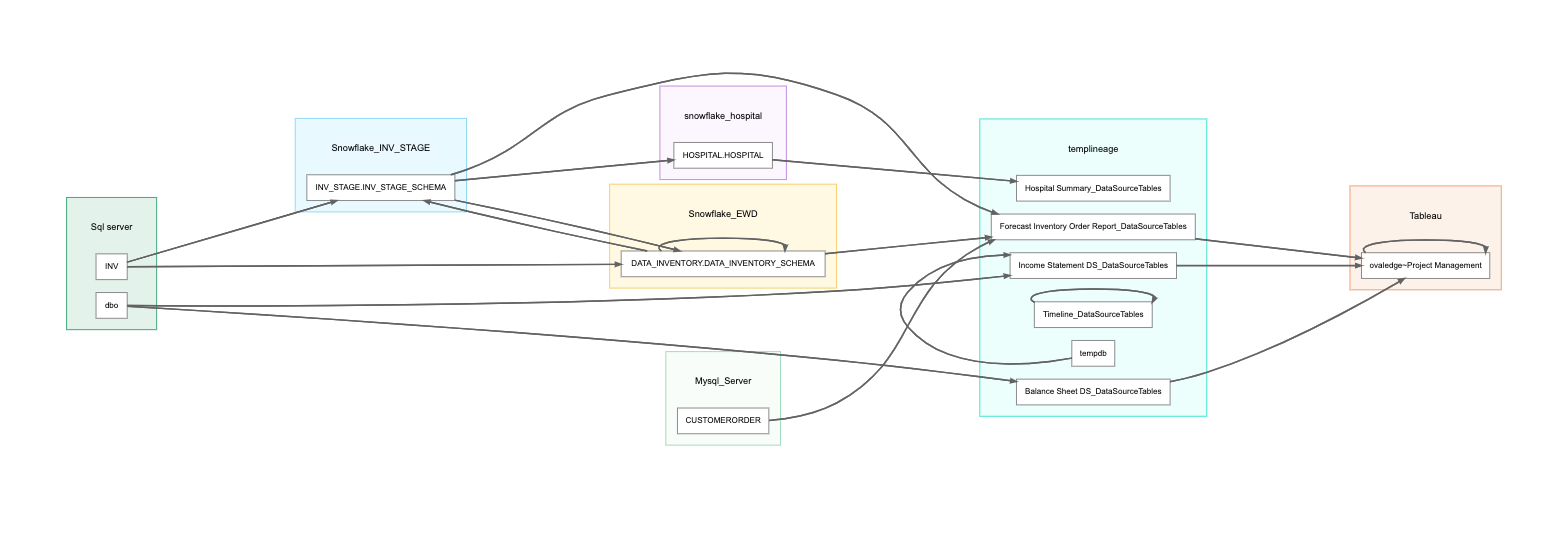
Tracking Data Lineage at the System Level
2. Object level: In OvalEdge, tables and report files are considered objects. The OvalEdge GUI depicts the lineage at the object level, which helps users communicate with the right people if there is a problem with the quality of data downstream.
You can quickly find everyone affected by a problem through impact analysis and inform and educate them about it. Object-level data lineage tracking is essential to building trust in data.
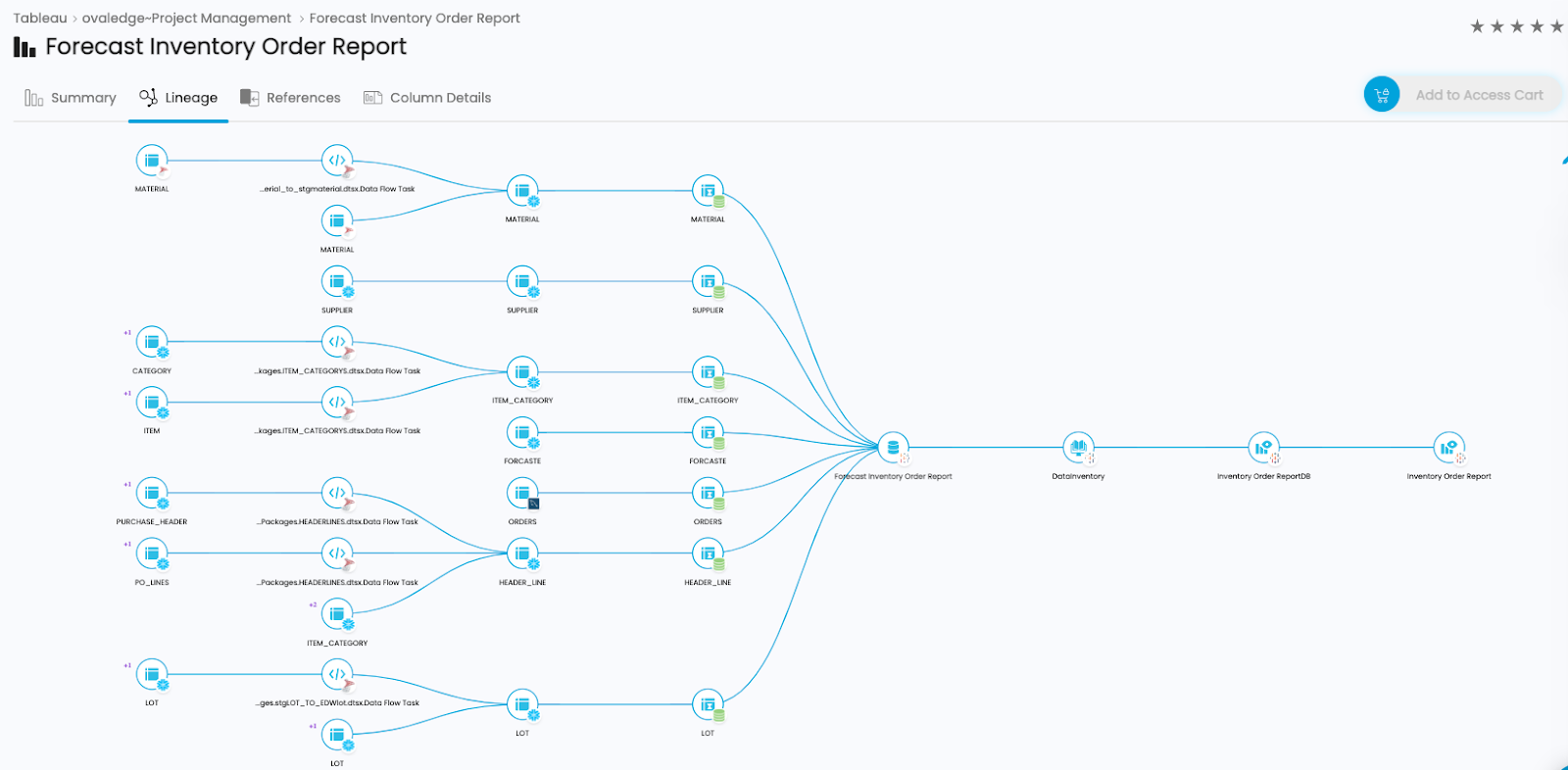
Tracking Data Lineage at the Object Level
3. Column level: All table columns, file columns, and report attributes are connected and displayed in OvalEdge. Column-level tracking is vital for compliance and impact analysis because it enables users to drill down to precise data points.
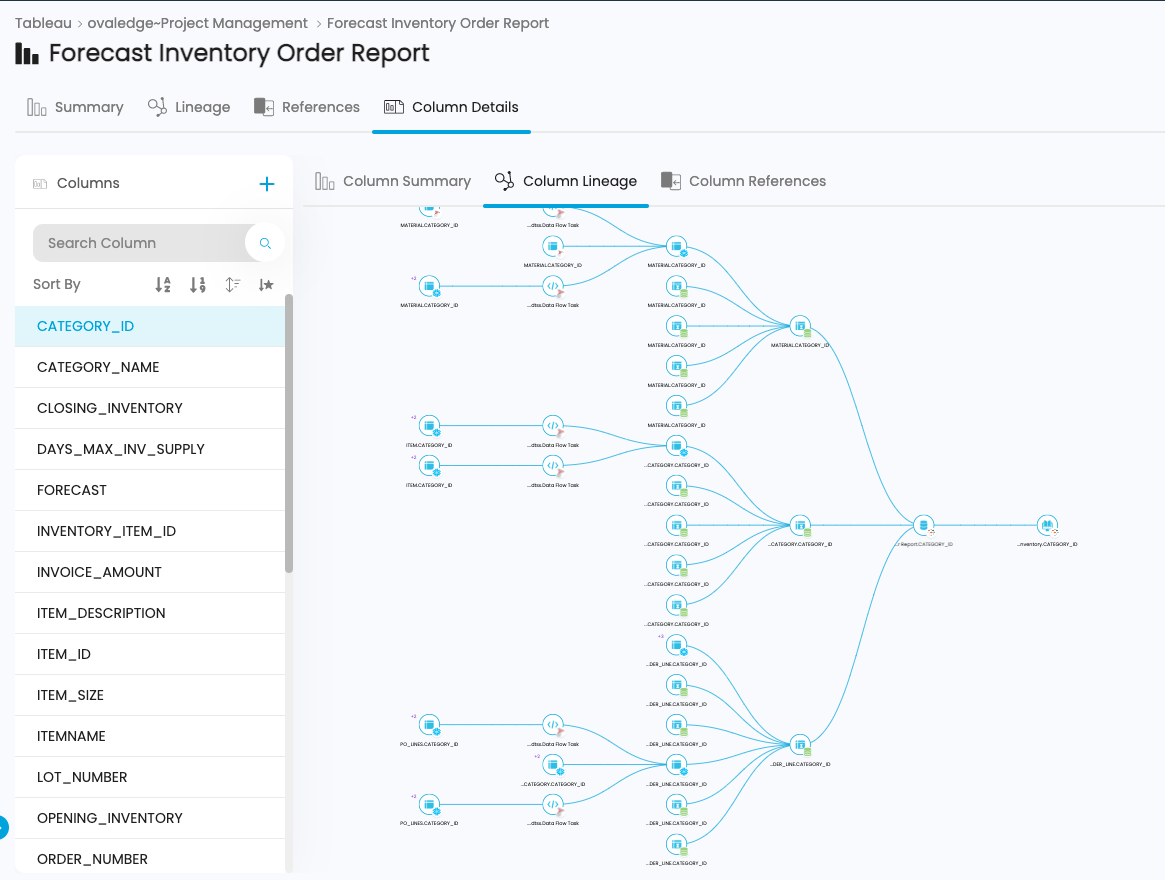
Tracking Data Lineage at the Column Level
Related Post: 3 Data Privacy Compliance Challenges that can be solved with Data Governance
How to Build and Visualize Data Lineage
There are two approaches to lineage building and visualization: the manual approach and the automated approach. While manual lineage building is incredibly complex, there are some key reasons why some organizations choose to do it.
Predominantly, organizations commit to manual lineage building to adhere to specific compliance requirements. However, automated lineage building is both simpler and more comprehensive.
A lineage tool automates lineage building by parsing the source code of various supported systems such as reporting systems, ETLs, data warehouses, and SQLs. After reverse engineering, lineage is built automatically. You can access data lineage via backend algorithms to automate various processes.
Many specific applications include lineage tracking facilities, but when users want to move data out of the application, they encounter difficulties. This is where a tool’s automated lineage-building facilities are critical.
Creating custom infrastructure is often required in today’s complex and data-driven business landscape. Consequently, data is moved regularly from place to place.
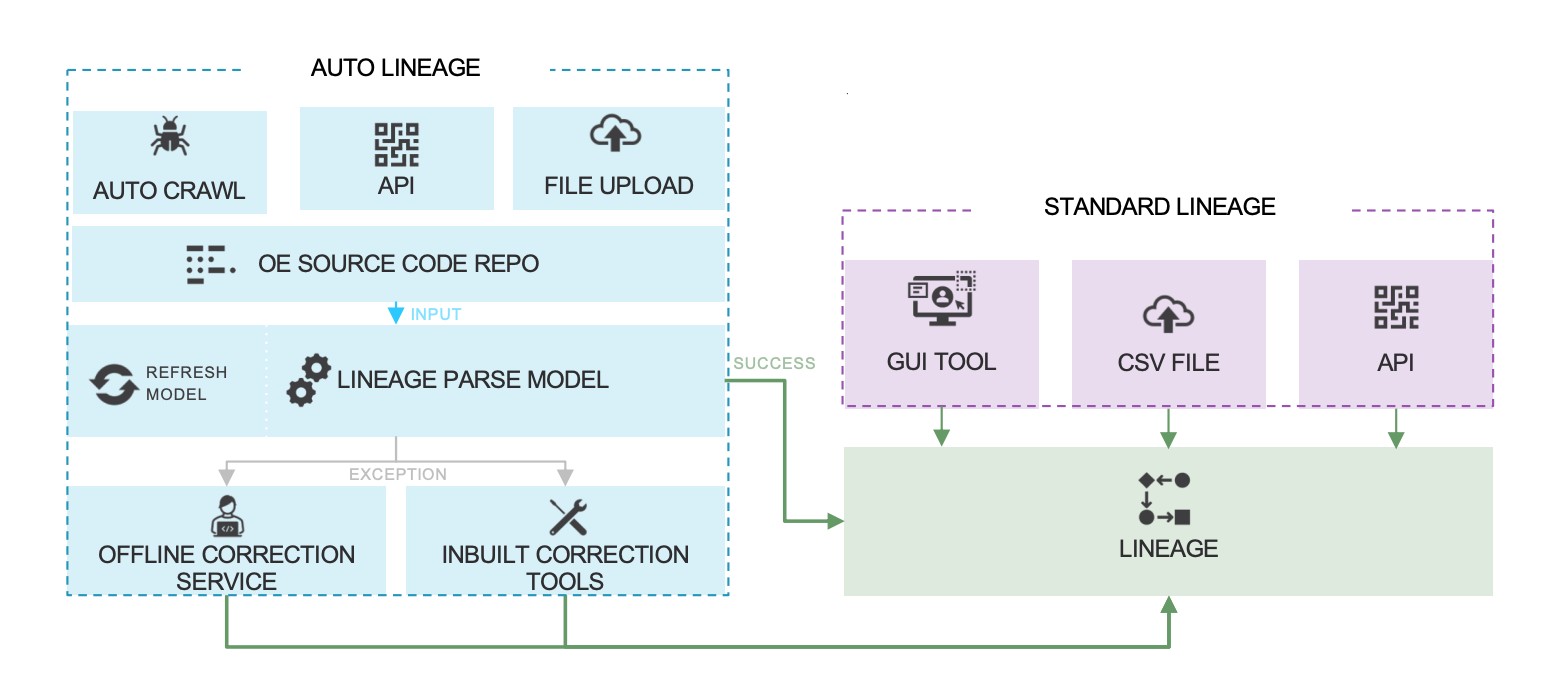
Conclusion
When it comes to data governance, certain aspects can’t be ignored. Data lineage is one of those aspects. Regardless of your industry or sector, understanding different data lineage approaches and techniques for data lineage is essential to building trust and ensuring compliance.
With so much data to govern, lineage tracking and building can be incredibly difficult and time-consuming. However, by understanding how to implement data lineage effectively and leveraging tools that support all types of data lineage, organizations can achieve transparency, compliance, and confidence in their data systems.
FAQs
1. What is data lineage and why is it important?
Data lineage is the process of tracking and recording the flow and transformation of data from its origin to its final destination. It is essential for ensuring data quality, building trust in data products, and meeting regulatory compliance requirements.
2. What are the different types of data lineage?
The main types of data lineage include system-level, object-level, and column-level lineage. System-level shows the flow of data across systems, object-level tracks tables and files, and column-level provides detailed visibility into individual data points for compliance and impact analysis.
3. What are the common techniques for data lineage?
Techniques for data lineage include both manual and automated tracking. Manual techniques involve documenting data flow by hand, often for compliance purposes. Automated techniques use tools that parse source code, ETLs, and databases to build lineage efficiently and comprehensively.
4. How do organizations implement data lineage effectively?
Organizations implement data lineage by using a combination of data lineage approaches, including system, object, and column-level tracking, and leveraging automated tools to visualize and monitor data flows. Clear processes for impact analysis and compliance are also critical.
5. What are the benefits of tracking data lineage?
Tracking data lineage helps organizations ensure data quality, build trust in data products, comply with regulatory requirements, and perform impact analysis efficiently. It also allows teams to understand the origin, movement, and transformation of data across their entire ecosystem.
What you should do now
|
OvalEdge recognized as a leader in data governance solutions
.png?width=1081&height=173&name=Forrester%201%20(1).png)
“Reference customers have repeatedly mentioned the great customer service they receive along with the support for their custom requirements, facilitating time to value. OvalEdge fits well with organizations prioritizing business user empowerment within their data governance strategy.”
.png?width=1081&height=241&name=KC%20-%20Logo%201%20(1).png)
“Reference customers have repeatedly mentioned the great customer service they receive along with the support for their custom requirements, facilitating time to value. OvalEdge fits well with organizations prioritizing business user empowerment within their data governance strategy.”
Gartner, Magic Quadrant for Data and Analytics Governance Platforms, January 2025
Gartner does not endorse any vendor, product or service depicted in its research publications, and does not advise technology users to select only those vendors with the highest ratings or other designation. Gartner research publications consist of the opinions of Gartner’s research organization and should not be construed as statements of fact. Gartner disclaims all warranties, expressed or implied, with respect to this research, including any warranties of merchantability or fitness for a particular purpose.
GARTNER and MAGIC QUADRANT are registered trademarks of Gartner, Inc. and/or its affiliates in the U.S. and internationally and are used herein with permission. All rights reserved.


.webp)

